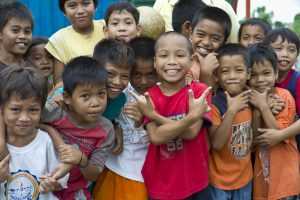The Inter-Agency Task Force for the Management of Emerging Infectious Diseases (IATF) in the Philippines recently recommended the extension of Alert Level 2 enforcement in 26 areas until the end of April 2023 due to the ongoing COVID-19 pandemic. The authorities made this decision to prevent the further spread of the virus in the affected areas. Let us take a closer look at this story from a medical perspective.
What is Alert Level 2?
Alert Level 2 is part of the Philippine government’s COVID-19 response framework. It classifies areas according to their level of transmission risk. Under Alert Level 2, certain restrictions are imposed to limit the transmission of the virus while allowing some businesses to operate.
What does it mean for me?
Alert Level 2 permits certain establishments to operate with limited capacity. Simultaneously, it bans casinos, horse racing, cockfighting and other gaming establishments. Establishments and activities such as social events, amusement parks, cinemas, classes, and personal care establishments are allowed to operate at a maximum of 50% indoor venue capacity for vaccinated individuals and those below 18 years of age, and 70% outdoor venue capacity. Fully vaccinated workers and organizers of activities are required, and minimum public health standards must be observed.
The Situation in the Philippines
Since reporting its first case in January 2020, the COVID-19 pandemic has been a struggle for the Philippines. According to the World Health Organization (WHO), as of April 2023, the country has recorded more than 3 million COVID-19 cases and over 50,000 deaths. These figures underscore the need for effective measures to prevent further transmission of the virus.
Medical Perspective
The decision to extend Alert Level 2 in 26 areas until the end of April 2023 is a precautionary measure to prevent a surge in COVID-19 cases in those areas. It is important to note that the virus is still present in the Philippines. Therefore there is a need to maintain public health measures to limit the spread of the virus.
Medical experts have emphasized the importance of vaccination in reducing virus transmission. In the Philippines, the vaccination program is ongoing, with priority given to healthcare workers, elderly individuals, and those with comorbidities. The Department of Health reports that as of April 2023, it has fully vaccinated around 30% of the country’s population against COVID-19.
The WHO has also emphasized the importance of non-pharmaceutical interventions. These include wearing masks, practising physical distancing, and proper hand hygiene, to prevent the transmission of the virus. These measures are crucial, especially in areas with high transmission levels.
Furthermore, medical experts have stressed the importance of testing and contact tracing in containing the spread of the virus. Effective contact tracing can help identify individuals who may have been exposed to the virus and prevent them from transmitting it to others.
Conclusion
The decision to extend Alert Level 2 in 26 areas until the end of April 2023 is necessary to prevent the further spread of COVID-19 in the Philippines. The ongoing vaccination program and the implementation of public health measures can help reduce the transmission of the virus. They include testing, contact tracing, and non-pharmaceutical interventions. As the world moves on from the COVID-19 pandemic, it is crucial to remain vigilant and take the necessary precautions to protect ourselves and those around us.












